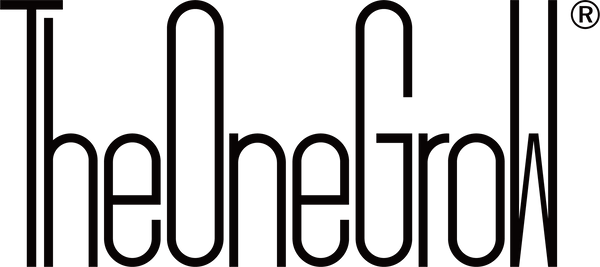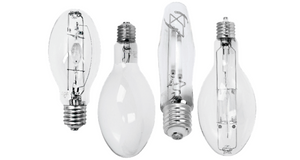If growers, gardeners, or even amateur enthusiasts do not have the opportunity to cultivate their favorite flowers or plants in an outdoor garden, or lack the time to find a suitable outdoor spot, there is an easier alternative: growing plants indoors.
This method, known as indoor or closed cultivation, involves artificially replicating natural conditions. Unlike outdoor cultivation, where growers face challenges such as adverse weather, wild animals, theft, and curious neighbors, indoor growing allows for a controlled environment. This setting enables growers to protect their plants from harm and experiment with optimal growth conditions to produce more beautiful and productive plants.
The key prerequisite for indoor cultivation is the amount of light required by the plants. This light can be simulated using artificial lighting that mimics the sun's spectrum. By using artificial lighting, growers can control the spectral range that plants receive at different growth stages.
Three types of lighting are suitable for plant growth and flowering: high-pressure lamps, fluorescent lamps, and LED and plasma lamps.
Light is essential for plants, as it is a primary factor in their development. It is a crucial energy source for photosynthesis.
Photosynthesis involves the absorption, conversion, and utilization of light energy through various reactions that convert carbon dioxide into organic compounds. Essentially, it is the process of forming organic compounds using carbon dioxide, water, heat, and light energy.
To choose the right lighting, you need to be familiar with all types of lighting.
High intensity discharge lamps (HID) are classified according to the burner and the gas it contains:
Mercury discharge lamp (MV / mercury vapor lamp).
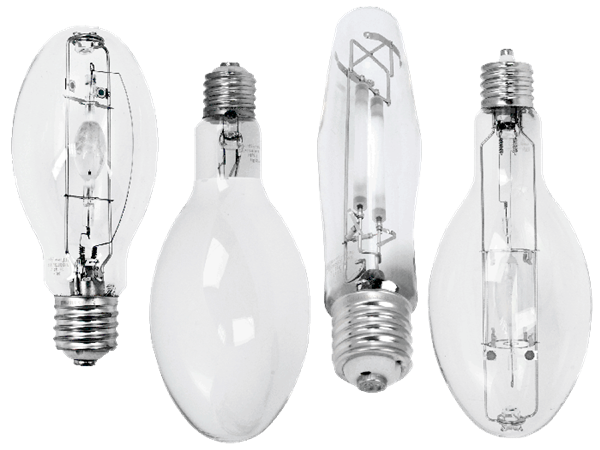
The mercury discharge lamp was the first gas discharge lamp developed in 1959. Mercury lamps mainly emit blue and ultraviolet light in the invisible spectrum. The luminous flux of these lamps is low (approximately 65 lm/W). Compared with metal halide lamps and sodium lamps (approximately 150 lm/W), this light is considered weak for crop production.
Metal halide lamp (MH/metal halide lamp).
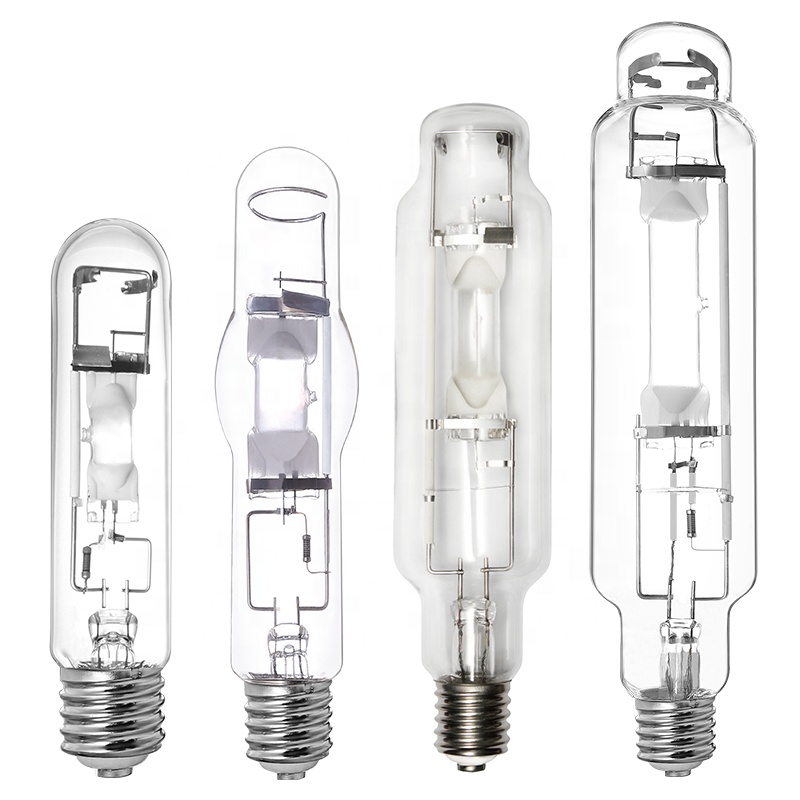
The first MH lamps were developed in the early 1960s. The metal halide lamp is characterized by a "white" light color, which at first glance is different from, for example, a sodium lamp. Metal halide lamps have a blue spectrum with a color temperature of 6,000 K or higher. The blue spectrum has a positive effect on the root system of plants, resulting in better branches and shorter internodes. The plants under this lamp are lower but have branches. However, during the flowering period, this lamp is usually not suitable.
Metal halide lamps are very suitable for cuttings and seedlings. Small plants don't like light, they branch well from the beginning. It is also recommended to use this type of lamp on the mother plant to ensure more buds and faster plant growth.
The burner in the lamp is shaped like a bulb. The flask is filled with a mixture of mercury, argon and metal halides (for example, metal compounds and bromine or iodine).
These lamps have wattages of 150 W, 250 W, 400 W, 600 W, 1000 W and a color temperature of 4000 K.
HPS/High Pressure Sodium Lamp.
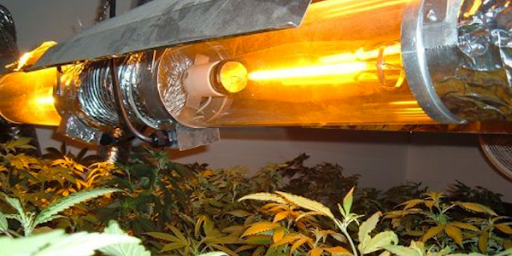
Sodium lamps were put on the market in the early 1970s and are the most widely used type of lighting for plant growth in the world. This is mainly because they have the highest luminous efficiency (approximately 150 lm/W) and also emit FAR radiation that is most suitable for correct photosynthesis. The light emitted by the HPS lamp is mainly in the red spectrum, which is suitable for the flowering period of the plant. The color temperature of the lamp ranges from approximately 2000 K to 2900 K and produces bright yellow.
The sodium lamp burner is mainly made of corundum.
Sodium lamps are available in 70W, 150W, 250W, 400W, 600W, 750W and 1000W, and can be used in the growing period, provided that the plant has more internodes and tends to extend toward the light.
The advantages of HID lamps over other light sources are indeed very high. These lights are used for indoor planting and large greenhouses for commercial planting. Disadvantages include higher operating temperature.
The second light source most suitable for growing plants is linear and compact fluorescent lamps, sometimes called resource-saving, energy-saving, compact fluorescent lamps, etc.
These lamps have a great advantage in that they do not emit heat like HPS and MH lamps. Therefore, they can be grown in a small space near the top of the plant without worrying about burns.
The use of fluorescent lamps does not only depend on micro growth. Producers use them to illuminate the mother plants, rooted cuttings and seedlings. But this is not all. Due to their color temperature changes, these lamps can be used in all stages of plant life.
Fluorescent lamps are low-pressure mercury lamps, which are divided into compact and linear types.
Fluorescent lights.
Compact fluorescent lamps are available in the following color temperatures:
-
2700 K-red spectrum, suitable for flowering period.
-
4000 K-double spectrum for growth and flowering.
-
6400 K-blue spectrum, suitable for growth period.
-
14000 K-white spectrum, suitable for rooting of cuttings, seedlings and female parents.
It should be noted that when combined compact fluorescent lamps are used, the results will be lower and the plant life span from planting to harvest will increase. Therefore, it is recommended to use blue spectrum lights and red spectrum lights.
CFL lamps that can grow are currently available in the market at prices of 125W, 200W, and 250W.
Compared with linear fluorescent lamps, CFL lamps need to be replaced more frequently. According to the usage time, the guaranteed working time is about one year. Then, the intensity of these lights will drop quickly.
LED lighting also occupies its due position in the market, but for some LEDs, it represents the future of evolving technology, while for some people, its expectations are too high.
The recognition that LED lighting (light emitting diode) can be used for plant cultivation is now very widespread. However, only a few people know the advantages and disadvantages of this LED option.
LED is an electronic semiconductor device that emits light when current is directed.
Mankind became familiar with the first type of LED in 1962, and since then, this type of lighting has been continuously developed.
Currently, the brightness of LEDs is 100 lumens per watt, which is sufficient for farming. The LED structure is an LED chip (or a combination of chips) coated with epoxy resin with required optical properties. Some manufacturers also use the optical properties of lenses to enhance the intensity of light concentrated in one place. The most common power LEDs installed in the panel are 1 watt and 3 watts, and 6W LEDs can be used in some countries/regions.
Compared with HID lamps, LED panels have an interesting function. They do not emit heat radiation, which is a huge advantage for manufacturers who often suffer from high temperatures. In addition, the total power consumption of the lamp is less.
LEDs are completely different from other light sources because there is no tungsten wire that will burn or fall over time, and there is no gaseous component, which makes the lamp more durable. In addition, since the main component of the LED (diode) is hidden under the epoxy layer, it becomes an indestructible component. Opinions on LED lifetime vary widely. However, in general, the running time is approximately 50,000 hours.
The advantage of LED panels is the combination of diodes with different chromatographic spectra, so this kind of lighting is suitable for all stages of the life of the factory. The LED backlight panel has excellent depth. Perhaps because of the above lens, the panel can be hung on the plant and can better illuminate the buds (depending on the type and wattage of the panel).
However, this type of lighting has its disadvantages, such as high cost, which often deters gardeners from purchasing LED panels. Many growers enjoy experimenting with new technologies, but the high price of LED panels makes them think twice before investing in such products.
LED panels come in various shapes (circular, square, rectangular) and emit light at specific angles, which can make it challenging to cover the entire growing area uniformly.
One of the most significant innovations in lighting technology is the Light Emitting Plasma (LEP) system.
LEP, also known as plasma lighting, sulfur lamp, or Plasma Lighting System (PLS), utilizes microwaves and sulfur to produce light. Despite the different terminologies, they all refer to the same product.
Plasma lighting emerged as a major innovation in the 1990s, aiming to mimic the solar spectrum closely. Although it faced commercial setbacks initially, leading to its discontinuation, it was later reintroduced to the market.
LEP lighting systems produce a broad FAR range, beneficial for plants, and closely resemble solar radiation. This capability aligns with the primary goal of LEP manufacturers to imitate natural sunlight.
The color temperature of LEP plasma lamps is around 5600 K, which makes them suitable for the growth phase of plants. Manufacturers recommend using LEP lights during the growth period and switching to High-Pressure Sodium (HPS) lamps during the flowering phase. While using LEP lights during flowering might result in lower yields, the quality of the produce is often superior. LEP lighting is also highly effective for mother plants and cuttings, producing excellent results.
